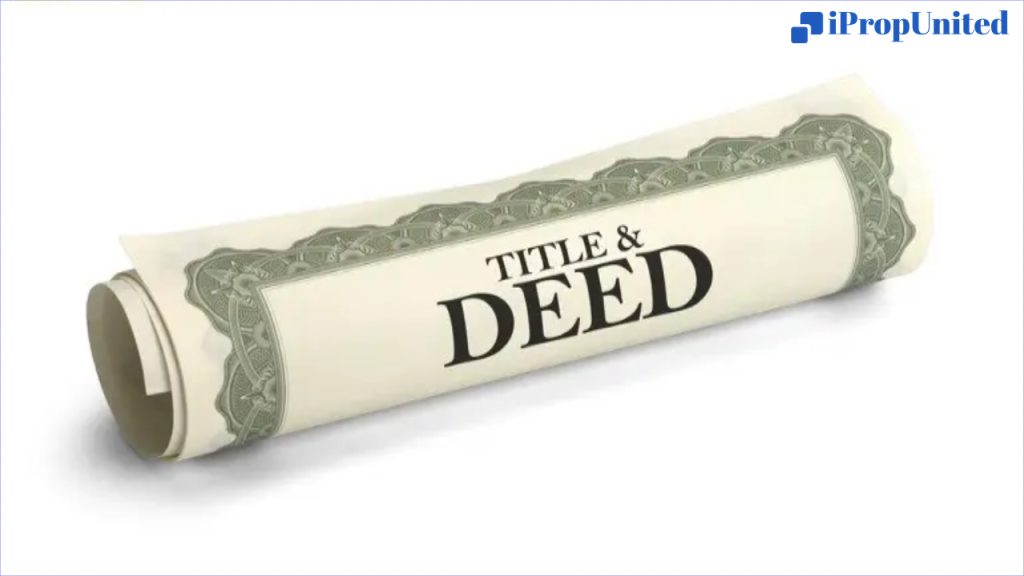You must have noticed that when you apply for a home loan, the lender requires you to provide numerous documents pertaining to your residential property and sign several commitments, including the Memorandum of Deposit.
Memorandum deed of your house property is another name for the MOD, which stands for memorandum of deposit of title deeds. Check out what MOD is and how it relates to home loans.
What is MOD in Home Loan?
The Memorandum of Deposit of title deed must be signed in order for the home loan to be disbursed.
It is an assurance provided by the homeowner loan borrower that the depositor has left the property’s title deeds with the lender.
The lender has a right to a share of the property up until the loan is fully repaid, according to the MOD.
In order to obtain a home loan in India, you must give the lender a copy of every document proving your ownership of the property. In the event that the borrower defaults on the mortgage, the MOD grants lenders the right to seize the property that has been pledged.

What are MOD charges for home loans?
The Memorandum of Deposit (MOD) is a fee that must be paid when you apply for a home loan. Depending on the lender and the loan’s terms, MOD fees for mortgages may change. This MOD is necessary to verify that you have given the lending company the title deed to your property as loan collateral. Home loan MOD fees typically range from 0.1% to 0.5% of the principal amount of the loan and depend on your state of residence or property. The MOD outlines the terms and conditions of the loan, including the amount of the deposit, the interest rate, and the repayment schedule. It acts as a legally binding contract between the lender and the borrower.
How MOD is Cancelled?
The lender must terminate the MO and release the property from liens once the loan has been paid off in full. The lien on the property will be released by the registration department and the MOD will be released after a representative of the lender visits the registration office and executes a release deed.
Make sure the property address is accurate, the lender has no claim on the property, and that it is stated that all outstanding debts have been paid in full in the release deed and NOC.
Why is an MOD Required When Taking Out a Home Loan?
According to the MOD, the lender has the right to take back the property in the event of a default and may also sell it at auction to recoup its debts.
It is carried out to lessen the lender’s risk of suffering a loss.
MOD Home Loan Benefits
In order to record the deposit of money or other assets as collateral for the loan, a memorandum of deposit (MOD) is a document that is used in home loan financing. When the borrower has weak financial standing or a bad credit history and the lender needs additional security to approve the loan, it is frequently used in these circumstances.
Compared to registered mortgages, a MOD in a home loan is thought to have a number of benefits. In the first place, it eliminates the possibility of fraud in the home financing process. Additionally, the total amount that must be paid for stamp duty and other expenses may be as little as 0.1% of the loan amount.
In addition, the owner is not required to go through any kind of registration process because the lender transfers the property to the rightful owner after a debt settlement. Usually, a third party holds the deposit in escrow that is released to the borrower only after the loan has been fully repaid.
Bottom Line
Comparing MOD home loans to registered mortgages reveals many benefits. For example, the cost of stamp duty and other fees can be as low as 0.1% of the loan’s balance. whereas the rates and fees for registered mortgages are much higher.
After making a mortgage payment, you can easily obtain the title deed, and no registration is necessary when the lender hands the property over to you. Additionally, it eliminates the potential for home loan scams, which can ruin your experience buying a home.
Determining the title deed process with the lender and the associated fees requires checking the MOD before submitting an application for a home loan.
Follow and Connect with us: Twitter, Facebook, Linkedin, Instagram








